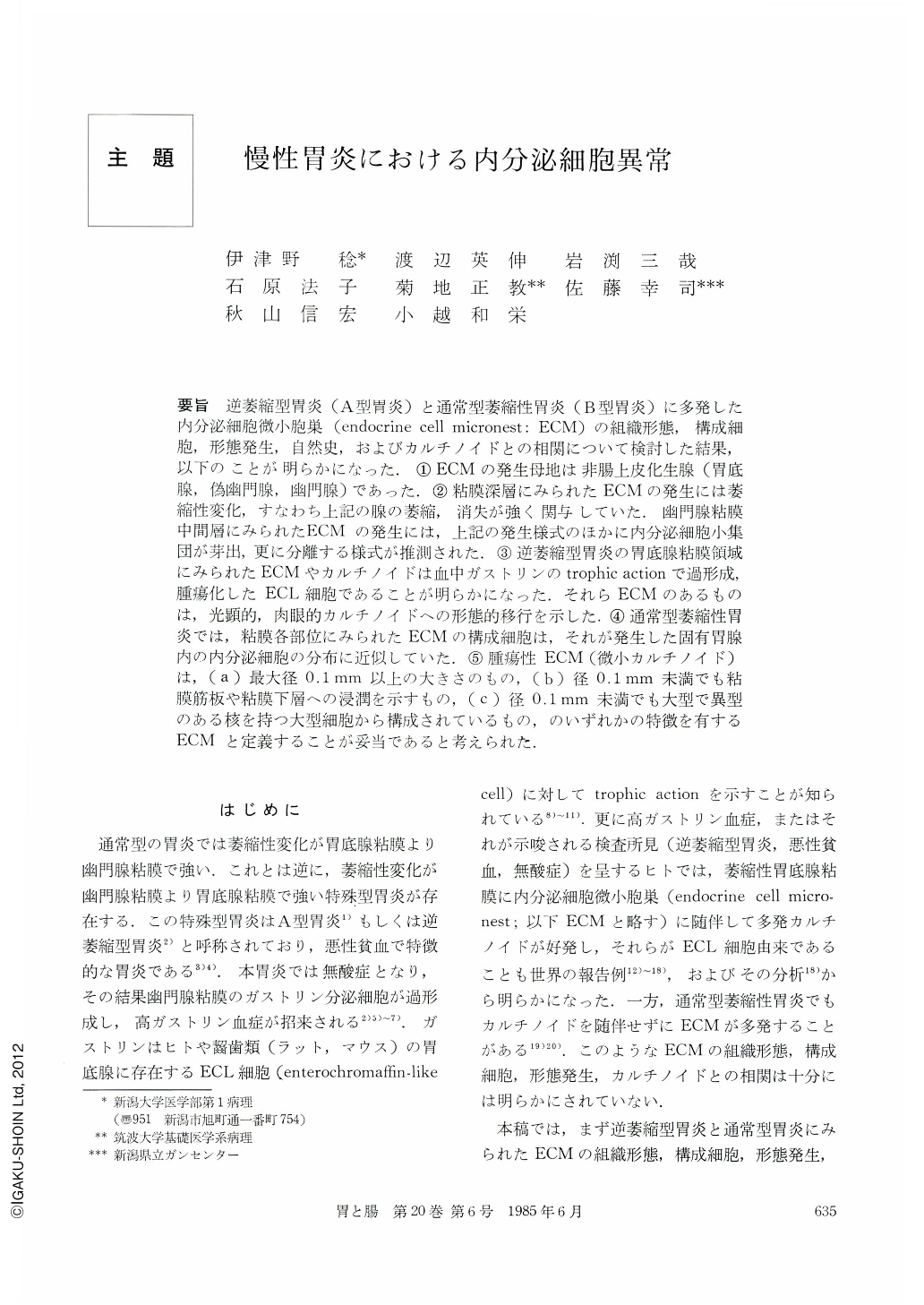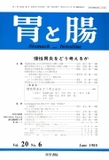Japanese
English
- 有料閲覧
- Abstract 文献概要
- 1ページ目 Look Inside
要旨 逆萎縮型胃炎(A型胃炎)と通常型萎縮性胃炎(B型胃炎)に多発した内分泌細胞微小胞巣(endocrine cell micronest:ECM)の組織形態,構成細胞,形態発生,自然史,およびカルチノイドとの相関について検討した結果,以下のことが明らかになった.①ECMの発生母地は非腸上皮化生腺(胃底腺,偽幽門腺,幽門腺)であった.②粘膜深層にみられたECMの発生には萎縮性変化,すなわち上記の腺の萎縮,消失が強く関与していた.幽門腺粘膜中間層にみられたECMの発生には,上記の発生様式のほかに内分泌細胞小集団が芽出,更に分離する様式が推測された.③逆萎縮型胃炎の胃底腺粘膜領域にみられたECMやカルチノイドは血中ガストリンのtrophic actionで過形成,腫瘍化したECL細胞であることが明らかになった.それらECMのあるものは,光顕的,肉眼的カルチノイドへの形態的移行を示した.④通常型萎縮性胃炎では,粘膜各部位にみられたECMの構成細胞は,それが発生した固有胃腺内の内分泌細胞の分布に近似していた.⑤腫瘍性ECM(微小カルチノイド)は,(a)最大径0.1mm以上の大きさのもの,(b)径0.1mm未満でも粘膜筋板や粘膜下層への浸潤を示すもの,(c)径0.1mm未満でも大型で異型のある核を持つ大型細胞から構成されているもの,のいずれかの特徴を有するECMと定義することが妥当であると考えられた.
Endocrine cell micronests (ECMs) occurred in the reversed atrophic type gastritis (type A gastitis) and common type atrophic gastritis (type B gastritis) respectively, were studied. ECMs in both types of gastritis developed from the fundic glands, pseudopyloric glands and pyloric glands. ECMs were formed mainly by the atrophy and disappearance of these glands and partly by the separation following budding of intraglandular endocrine cells. The kinds of endocrine cells constituting ECMs in the common type atrophic gastritis were similar to those distributed in the proper gastric glands, from which ECMs developed. It was proved that ECMs and carcinoids in the atrophic fundic mucosa of the reversed atrophic type gastritis were hyperplasia and/or neoplasia of ECL cells caused by the trophic action of the subsequently raised serum gastrin.
As the conclusion of our comparative study on ECMs occurred in both types of atrophic gastritis, neoplastic ECMs (microcarcinoids) of the stomach were defined as follows: (1) ECMs larger than 0.1 mm in the largest diameter, (2) ECMs, even if smaller than 0.1mm, invading the muscularis mucosae or submucosa, or (3) ECMs, even if smaller than 0.1mm, composed of large endocrine cells with a large nucleus.

Copyright © 1985, Igaku-Shoin Ltd. All rights reserved.


